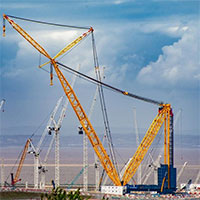How to free the submarine crew in an emergency situation?
Submarine accidents are rare, but once they do, they often lead to situations that directly threaten the life of the entire crew. Therefore, the solution to the problem of survival in a modern submarine is always of great significance in the general context of the completion of the submarine fleet.
Most modern submarines are designed so that if the main ballast tanks are filled with water, they remain buoyant. If the submarine can’t keep moving, it can still surface.
But if a large amount of water gets inside the submarine, sooner or later it is necessary to save it from sinking to the bottom, from the effects of extreme pressure.
Experts have outlined some of the most dangerous situations during the sinking, uncontrollable process: the submarine is submerged, the pressure increases, the temperature changes, toxicity appears. In the air, the ship’s life support system failed. The above risks directly affect the time allowed for the survival of the crew on the submarine.
At the beginning of submarine history, submarine crews were truly “suicide soldiers”: a large number of submariners perished.
During World War II, the only way to escape a sunken submarine was a torpedo launcher, but it wasn’t that simple. Usually, sailors in distress had to give up and die.
The most important thing is to keep the life and health of the crew members, that’s why so much attention is focused on the escape problems on the submarine.
Naturally, it is easier to prevent a critical situation than to try to remedy it, so the placement of weapons, stealth, electronic warfare systems, navigation, etc. is special. attention from the very beginning of the submarine design. Evacuation possibilities and measures are specially studied.
Evacuation compartments are located in the bow or stern of the submarine , where special equipment is used in case of emergency.
These are signaling, oxygen supply and carbon dioxide absorbing means, personal emergency radio beacons, rescue suits, equipment for admission to the emergency support compartment, etc.
One of the most important means to increase the survivability of the crew in critical situations is the submarine’s emergency evacuation compartment.
In Russia, such a compartment was tested for the first time in 2014: in addition to a test crew of 5 people, a weight was added to the compartment exactly equal to the total weight of the whole crew. submarine.
The rescue compartment today is fitted to all modern Russian submarines under construction. This invention of the Soviet designers is truly priceless because this rescue compartment can save the lives of all members of the submarine crew.
However, as the tragedy on the K-278 “Komsomolets” nuclear submarine in 1989 showed: the rescue capsule is not a panacea. The rescue compartment remained submerged, resulting in the deaths of many crew members.
On August 12, 2000, the nuclear submarine “Kursk” sank and the rescue compartment did not help the ship.
However, the test of the new rescue compartment on the nuclear submarine “Severodvinsk” gave very good results: it took only 10 seconds for the rescue compartment to rise to the surface.
Test participants compared how they felt during the rescue capsule’s rise to that of going up in a conventional elevator.
Inside the modern submarine “Yuri Dolgoruky” , the rescue compartment is located behind the missile compartment. Inside the cabin there are numbered seats assigned to each crew member and spare personal food and drink.

In every compartment of modern Russian submarines there is always a reserve of food.
In every compartment of modern Russian submarines there is always an emergency food reserve that can last a week.
Each sailor also has a portable breathing apparatus to act in the first minutes of a fire or the appearance of hazardous substances in the air. The task to be performed in a critical situation is to connect to the submarine’s backup breathing system.
Also on board the submarines are special rafts , each designed for 20 crew members. Each raft is equipped with the necessary equipment to survive in the ocean: holes to catch rainwater, fishing gear.
Talking about survival in a modern submarine cannot fail to touch on the psychological aspect, as no modern equipment and means of escape can replace the cohesion and endurance of a sailor. group.
Although today automation and robots are gradually replacing humans in many things, the human factor is still decisive.
Therefore, NATO military psychologists, in the process of studying the experience of using submarine crews in operations in the Persian Gulf, have recognized the importance of training for mental stability. crew prior to combat duty.
At the same time, the psychological comfort of the crew largely depends on the living conditions created on the submarine.

